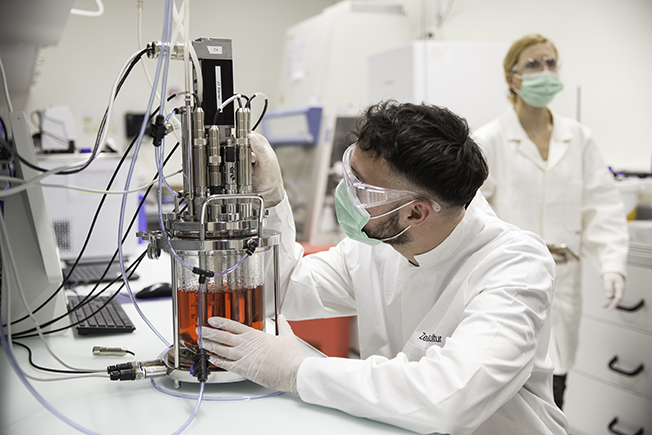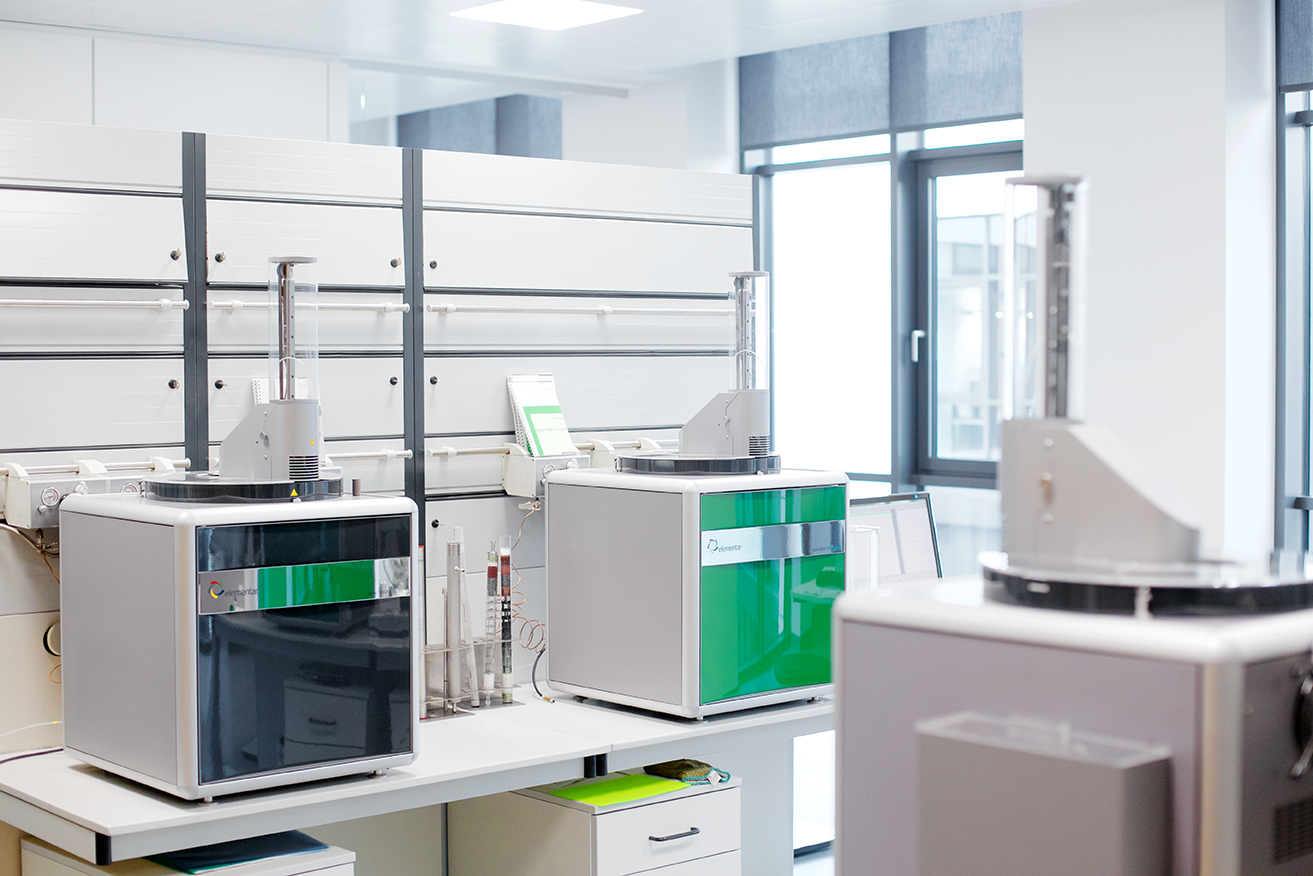
%20ILVO%202.jpg)
From lab to table: Ghent as a hub for fermentation-based proteins
Willy Verstraete and Myrsini Sakarika, a Professor and a researcher, both from the Centre for Microbial Ecology and Technology, reflect on the significant advances in the field of sustainable proteins
Ghent has boasted a thriving biotech sector since the 1960s. Initiatives such as The ProteInn Club, and research groups like the Centre for Microbial Ecology and Technology (CMET), are actively involved in the growing market for sustainable proteins, particularly fermentation-based and alternative ones. Their cutting-edge research in the application of mixed microbial communities, pure cultures, and resource management is improving the entire value chain in this industry.
%20ILVO%202.jpg)
From waste to sustainable solutions
With easy access to bio-based resources and a huge market demand, Ghent has attracted international investors and skilled professionals. The city wants to develop into a European Capital of Technology, and hosts Europe’s largest Agro-Biotech campus. One of the founding fathers of this is Willy Verstraete, who fondly recollects exploring the possibility of producing microbial protein from secondary resources during the early days. “We tried out different types of symbiotic fermentations, using teams of microorganisms that work together and thus convert practically all parts of the resources into novel, valuable products,” he says. “Aerobic and anaerobic fermentation using light were explored, with beautiful results obtained. The fermentation line with light using phototrophic bacteria became (and is still) part of the waste-recycling system of the European Space Agency (the Melissa cycle). However, no further attention was given to these for local ‘terrestrial’ applications as the time was not ripe.”
The high demand for animal feed protein was met through heavy reliance on soy imports, which raised environmental concerns. “Around 2015, the ‘protein shift’ concept emerged to develop more sustainable proteins for feed and food. In Ghent, we were waiting for this to open up, to explore producing microbial protein as a local alternative and to help sustain future food needs without compromising animal welfare.”
A vision for sustainable nutrition
Born in Greece, Myrsini Sakarika moved to Ghent in 2018, and was drawn to the CMET research group. “I did my PhD at CMET on microbial protein from one carbon compound, like methane, methanol, or formic acid, which can all be derived from CO2. This is interesting from a resource-recovery perspective, as you can take CO2 from industrial sources with many off-gasses and convert them into other molecules that are easier for the microbes to consume.”
%20Nele%20Ameloot.jpg)
According to Sakarika, microbial protein is a great source of nutritional proteins. “They can be produced in bioreactors without limitations due to the weather or climate. This could be a solution for regions that cannot produce food with conventional agriculture. They also have many sustainability benefits. For example, microbes, such as meat analogues, can efficiently convert their food into biomass. In this process, we have higher resource efficiency as the food we give these microbes to eat is converted into biomass. In an ideal scenario, the amount of land needed to produce food can be minimized when everyone eats microbial protein.
“But my biggest motivation is that it can improve animal welfare. It was like an epiphany when I discovered that it’s possible to produce fully nutritional products from microbes that can replace meat while mimicking its taste and texture.”
Fostering partnerships
The presence of The ProteInn Club has played a big role in establishing Ghent as a leading hub for microbial proteins. This platform fosters a deep interaction between knowledge and entrepreneurship. Ghent University, CAPTURE, Bio Base Europe Pilot Plant, and ILVO (Flanders Research Institute for Agriculture, Fisheries and Food) – together with the 30 members of the Industrial Sounding Board – have come together to speed up the development and implementation of promising technologies in actual industrial production of valuable applications. Together, they support companies from developing ideas to the conceptual phase (TRL 1), through pilot and demo phases to the ultimate implementation phase (TRL 9).
“They provide various platforms to promote our work,” Sakarika explains. “Having a central contact point to gather the information makes it easier. If, for instance, someone learns that I specialize in a particular aspect of microbial protein production, and they come across a company seeking such expertise, that’s really beneficial.”
Multiple sectors are involved in the discussions. “We’re noticing interest from food companies with potential by-products that could be utilized, biotech firms with reactors aiming to develop products or upgrade processes, and feed companies keen on utilizing the ingredients.
“The presence of these actors in the same place strengthens the network,” Sakarika adds. “If someone wants to upscale, they can easily transition from our facility to Bio Base Europe Pilot Plant, ILVO, Food Pilot, or directly to a finished product – conveniently located nearby.”
The road ahead
“At the start, we had to determine many things,” Verstraete recalls. “We had to check the levels of amino acids and digestibility and ensure the nucleic acid levels weren’t too high. Fortunately, all these characteristics turned out to be okay. Then, we faced an economic challenge – soy was cheaper! But we overcame that as well. The next issue to tackle was legislation.”
Our approach to microbial communities needs to change – we must prioritize diversity and adaptability to ensure they function optimally, just like the rumen ecosystem
“Yes, this is very important,” says Sakarika. “Microbial protein can also be produced using sidestreams, which can come from the food sector. They are perfectly fine to consume; they are just not valid for the food industry as we know it. You can use recovered carbon and CO2-derived organic molecules, for example. Similarly, you could use recovered nitrogen. But no specific frameworks are set for this protein production type. But we have been consuming microbial products ever since we developed food-preservation techniques.”
Many companies in and around Ghent are connected to The ProteInn Club and specialize in producing fermentation-based proteins. One of them, Avecom, started in 1995 as a spin-off from Ghent University and boasts a vast range of microbial cultures and nutrients. Its patented process, ‘Promic’, employs blended cultures to transform agricultural and food waste streams into single-cell or microbial proteins.
Those Vegan Cowboys, another example, has developed a way to produce the milk protein ‘casein’ in microorganisms, used to create cheese. Inbiose, meanwhile, produces a range of human-identical milk oligosaccharides suitable for industrial production. “And at Ghent University, we’ve been working with ArcelorMittal to convert their off-gasses into fish feed,” Sakarika reveals. “This converts the GHG emissions, preventing them from entering the atmosphere.”
New advances are being made every day. “We consume symbiotically fermented products like raw milk cheese and fermented sausages daily,” Verstraete says. “While the EFSA deems these products ‘safe’, stricter rules apply for the microbes used in more ‘novel foods’. Inadvertently, this has driven the development of microbial protein toward so-called ‘precision’ or defined ‘mono-cultures’. These are more expensive to produce and often result in substantial amounts of unused residues that go to waste. Shifting to a new protein type holds no promise for the future if the environmental impact of the new protein is not significantly lower.”

Hopes for the future
The duo is optimistic about bringing high-quality and sustainable microbial protein products to the market, with Sakarika already seeing tremendous changes in technology, and people’s perceptions, over these past five years. “I would hope to see all these processes have applications shortly, but don’t ask me to put an exact timing on that!” she laughs. “But I would never have imagined people would have been so informed about alternative food sources. So, who knows how it might evolve?”
Verstraete sees a real need to communicate to the public in general. “We must raise awareness among regulators and consumers about the environmental impact of the shift toward protein-based diets. Our approach to microbial communities needs to change – we must prioritize diversity and adaptability to ensure they function optimally, just like the rumen ecosystem. However, even in the rumen, cellulose conversion efficiency is limited. Therefore, we need to focus our research on finding ways to ferment plant fibers into valuable products using high-performance microbiomes, and why not symbiotic consortia of nitrogen fixation from the air, without relying on fossil fuel-based nitrogen?”
“On a larger scale, we need a comprehensive testbed configuration that spans over 10 years or more and involves multiple stakeholders – scientists, investors, regulators, and others. This should focus on the development of a protein shift and provide a complete life-cycle analysis of the underlying processes, along with an overall economic analysis of the value chains. The ProteInn Club can play a vital role in this by creating new foods and feeds that help reduce the impact of climate change.”
For more information visit www.investinghent.be
If you have any questions or would like to get in touch with us, please email info@futureofproteinproduction.com



.png)

